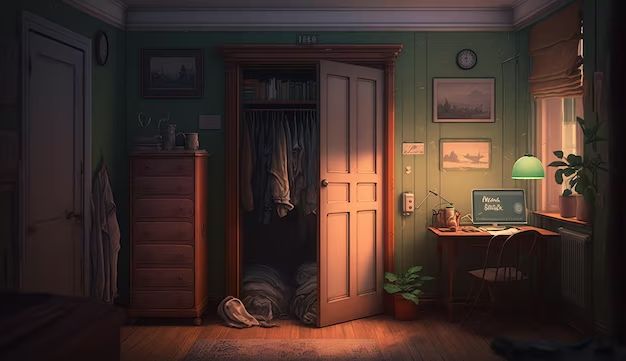Having a secret hiding spot in your room can be useful and fun! Whether you want to hide a diary, treasures, or snacks, a secret space adds an element of mystery and intrigue to your personal space. Making a hiding spot does require some planning and effort, but it is very doable as a DIY project. The key factors to consider are finding a suitable location, building or installing a hiding container, and effectively concealing it. With creativity and the right materials and tools, you can make a stash spot that goes undetected.
Page Contents
Where to Put the Hiding Spot
The first step in making a secret hiding spot is deciding on the location. Here are some aspects to consider:
- Accessibility – Choose somewhere that is conveniently accessed by you but unlikely to be stumbled upon.
- Visibility – Avoid places in direct eyesight, like an obvious cutout in the wall. Go for discreet areas instead.
- Foot traffic – Low foot traffic spots are ideal, as there is less risk of accidental discovery.
- Background objects – Use existing furniture, cabinets, decor etc to blend the hiding spot in.
- Versatility – Having multiple potential locations gives you options and backups.
Some good potential hiding spot locations include:
- Under the bed – A classic hiding spot out of immediate view. Just be sure you can reach it.
- Back of the closet – Concealed by clothes and clutter usually. Add a removable panel.
- Inside furniture – Tables, desks, and dressers with hollow spaces can hide containers.
- Doorframes and floorboards – Acutable if you don’t mind minor demolition.
- Inside books and boxes – Use fake books, jewelry boxes, etc. Be creative!
Think sneaky and be observant of overlooked spaces when deciding on your spot. Having it blend in is key.
Building the Hiding Container
Once you’ve selected a location, the next step is constructing a box, compartment or some kind of container for the actual hiding spot. You have several options for achieving this:
- Existing furniture – Many furniture pieces have usable empty spaces you can convert into stash spots. Just add a way to access it.
- Add-ons – Buy ready-made hidden compartments or build your own to attach to objects.
- Freestanding – Build a standalone secret container like a stash box to simply tuck away.
Some methods for different furniture hiding spots:
| Furniture | Hiding Method |
|---|---|
| Desk or dresser | False drawer – Make one drawer shallow and put an access panel in the back. |
| Bookshelf | Hideaway book – Hollow out books to stash items inside. |
| Bed base | Removable panels – Cut discreet access hatches under the mattress. |
| Nightstand | Secret compartment – Affix box inside with a trick opening mechanism. |
For standalone containers, opt for inconspicuous designs. Make sure they are durable and any openings are not obvious. Add camouflage as needed.
Concealing and Disguising Your Hiding Spot
The final crucial step is effectively concealing the stash spot so it blends seamlessly into the room decor. Use these techniques:
- Camouflage – Paint and decorate the container to match surroundings.
- Natural placement – Situate it logically with furniture to look intended.
- Keep it subtle – Avoid complex devices or mechanisms that raise suspicion.
- Misdirection – Use notices like “Do not hide things here” to divert prying eyes.
- Props – Place normal looking items around and on the hiding spot.
- Background objects – Put furniture or decor items strategically to obscure view.
Maintaining the façade over time is also important. Make sure you carefully return disguises like false panels or hidden latches every time the spot is accessed. The goal is for it to go completely unnoticed by anyone else in the room.
Extra Tips and Tricks
Keep these bonus tips in mind when designing your secret hiding spot:
- Have a decoy spot to divert attention from the real one.
- Make sure latches and hinges are well-oiled so they don’t squeak.
- Go for simple over complex designs less likely to break down.
- Avoid hiding in permanent constructs in case you move one day.
- Be fire safe and don’t block emergency exits or vents.
- Have a friend try to find it and refine as needed.
Conclusion
Creating a secret hiding spot in your room involves carefully choosing a location, building a stash container, and disguising it for stealth. With the right planning and techniques, you can make an ingenious, hard-to-detect space for concealing your valuables or private items securely. Take time designing and constructing your hiding spot using inconspicuous camouflage suited to the specific room. The end result will be a covert storage solution you can enjoy without giving away the clandestine spot.
